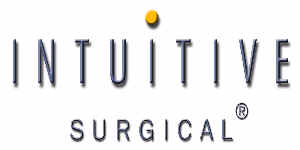|
|
|
|
|
CEOCFO Monthly Analyst
|
Intuitive Surgical, Inc.
 Healthcare
Intuitive
Surgical, Inc. 1240
W. Middlefield Road
Lonnie
M. Smith Interview
conducted by: CEOCFOinterviews.com BIO OF CEO
Lonnie M. Smith has been President and Chief Executive Officer
since May 1997 and has served as a member of Intuitive Surgical, Inc.’s board of
directors since December 1996. From 1977 until joining Intuitive Surgical, Mr. Smith was
with Hillenbrand Industries, Inc., a public holding company, serving as the Senior
Executive Vice President, a member of the Office of the President, and director since
1982, as Executive Vice President of American Tourister, Inc., from 1978 to 1982, and as a
Senior Vice President of Corporate Planning from 1977 to 1978. Mr. Smith has also held
positions with The Boston Consulting Group and IBM. Mr. Smith currently serves as a
director of Biosite Diagnostics, Inc. Mr. Smith received a B.S.E.E. from Utah State
University and an M.B.A. from Harvard Business School. About Since its inception in November 1995,
Intuitive Surgical has engaged in the development and commercialization of products that
are designed to provide the flexibility of open surgery while operating through tiny
ports. In 1999, they introduced their da Vinci™ Surgical System and EndoWrist™
instruments. By integrating computer-enhanced robotic technology with surgeons’
technical skills, Intuitive believes that its System enables surgeons to perform better
surgery in a manner never before experienced. CEOCFOinterviews - Mr. Smith, can you give us a brief
history of Intuitive Surgical, Inc? Mr. Smith: "The company began about 5 years ago
around a kitchen table in Rob Younge's home with 3 people, Fred Moll, a general surgeon
and medical director of Guident, who had started two other companies, Rob Younge a gifted
engineer who had co-founded Acuson and John Freund, an MD and MBA out of Harvard. They
took technologies out of SRI, formerly Stanford Research, IBM and MIT and created a
product and company with the potential to revolutionize the future surgery. The development of this technology was
initially funded at SRI by the army for the purpose of telesurgery, to allow surgeons to
be in a safe zone while performing surgery on soldiers in the battleground. Fred Moll was intrigued by this technology,
because he saw an opportunity to separate the surgeon's hand from the tip of the
instrument, and give them far greater flexibility. Fred has been a pioneer in minimal
invasive surgery since he was an intern at the University of Washington. He performed the
first endoscopic gallbladder removal on an animal, five years before it was ever done on a
human being. The mission of our company is to take the
surgery beyond the limits of the human hand™.
The human hand is a magnificent instrument, but its disadvantage in performing surgery is
its size. Our technology, which can be described as surgical robotics, transforms the
surgeon's natural hand into a mechanical hand that is the diameter of a pencil. It allows
the surgeon to insert these tiny hands into the human body through very small incisions
and to delicately and precisely manipulate, dissect and suture tissue, bringing the
benefits of minimally invasive surgery to broad spectrum of surgical procedures. These
benefits include less pain and trauma for the patient, lower morbidity, fewer
complications, quicker recovery, shorter hospital stay as well as lower health care costs. That has already happened in very simple
surgical procedures, like gallbladder removal, 90% of which are now done endoscopically or
minimal invasively. However, very complex surgery, like cardiac procedures, where we have
to separate the sternum and open the chest or radical prostectoctomy, the removal of the
prostate for prostate cancer, are still being done through large incisions. These are very
painful and bloody procedures and are very
traumatic for the patient. Our technology will allow those very complex surgeries that
require delicate tissue manipulation and suturing to be done endoscopically through small incisions. Five years ago we took a team of scientists out
of SRI and MIT and started the company. About a year and a half later, we had a system
that we could actually use to perform surgery. The
first human surgery with the system was performed in Brussels, in March of l997. The system was used to perform exploratory
surgery, gallbladder removal, and vascular surgery. We
knew it was safe, yet we wanted to better understand its capability and how to improve it.
We then performed cardiac surgery, the first closed chest coronary by-pass in June of l998
in Paris, France. Six months later, we
shipped our first commercial product, the da Vinci™ Surgical System to Leipzig,
Germany. That same year the da Vinci™ was on the cover of Life Magazine, in an issue entitled “Medical
Miracles of the Next Millenium”. In June of this past year, we received our first FDA
approval for a laproscopic use and the system is now being used in the US. We anticipate
getting the thoracoscopic approval, at the end of this quarter. This is the approval to
use the system in the chest cavity. CEOCFOinterviews - Can you describe the da Vinci™
system?
|

